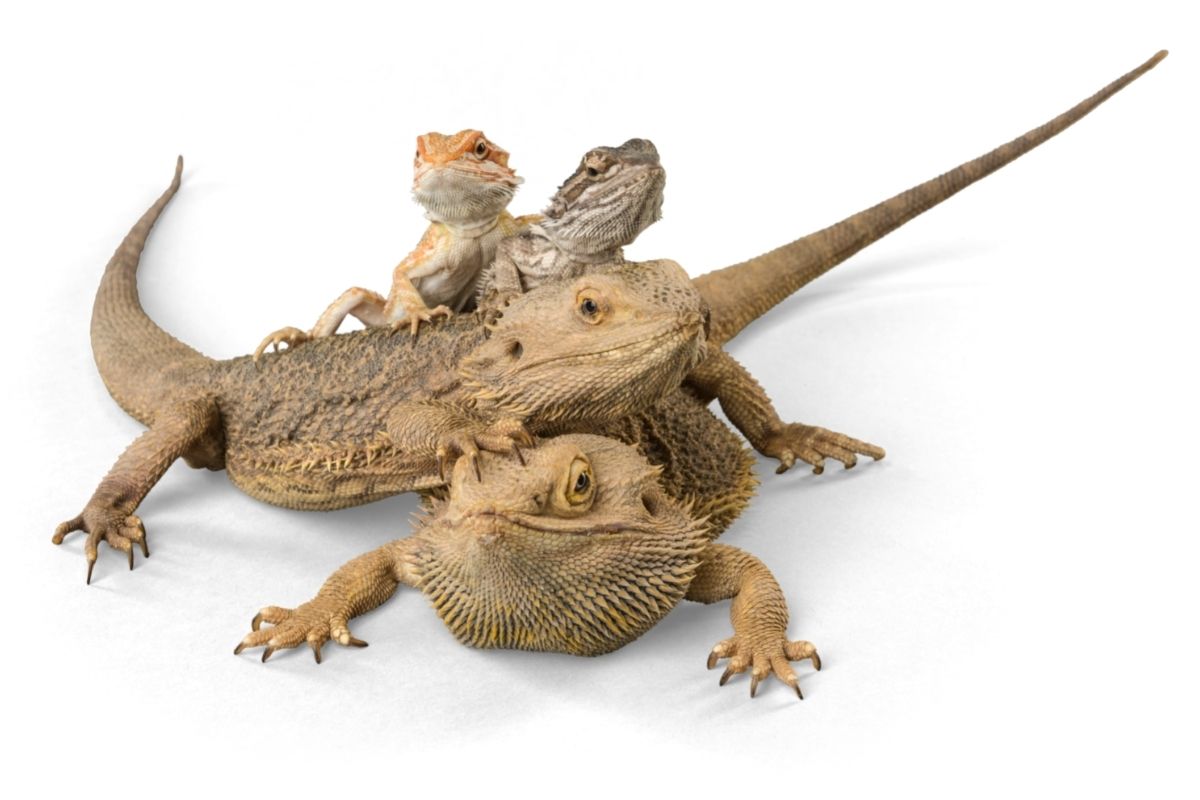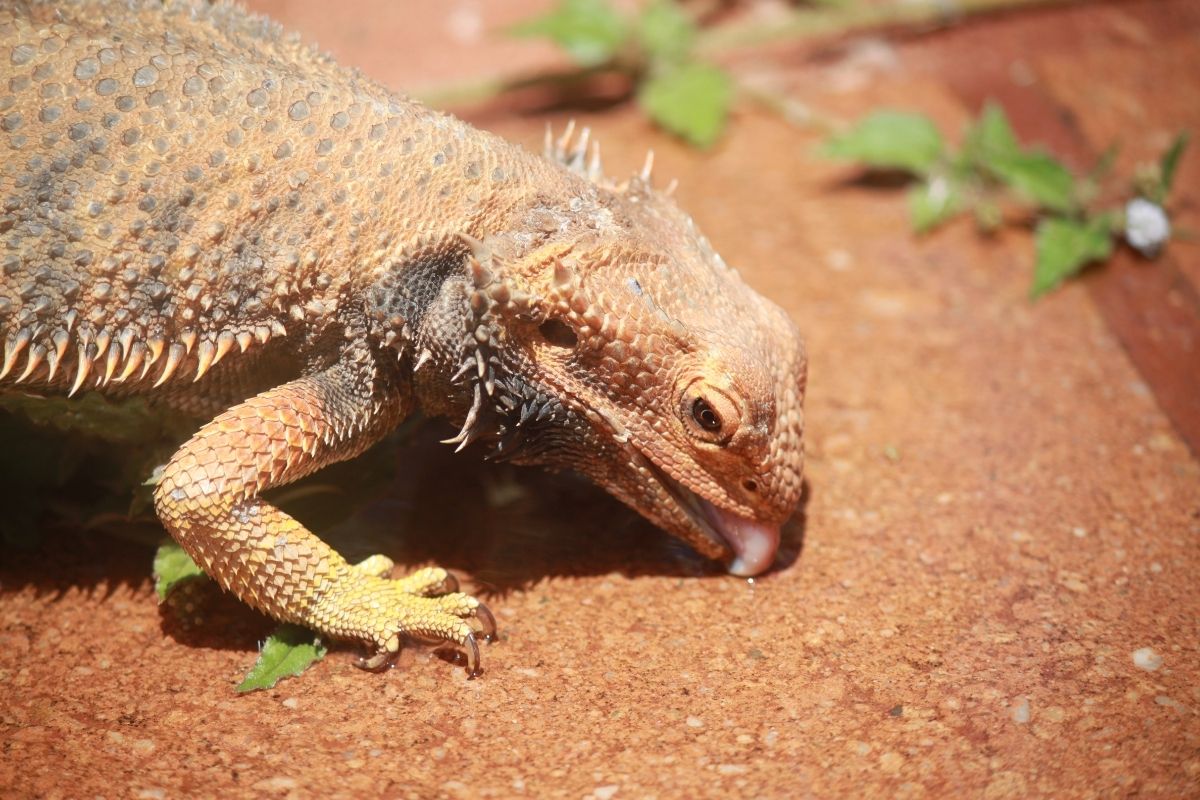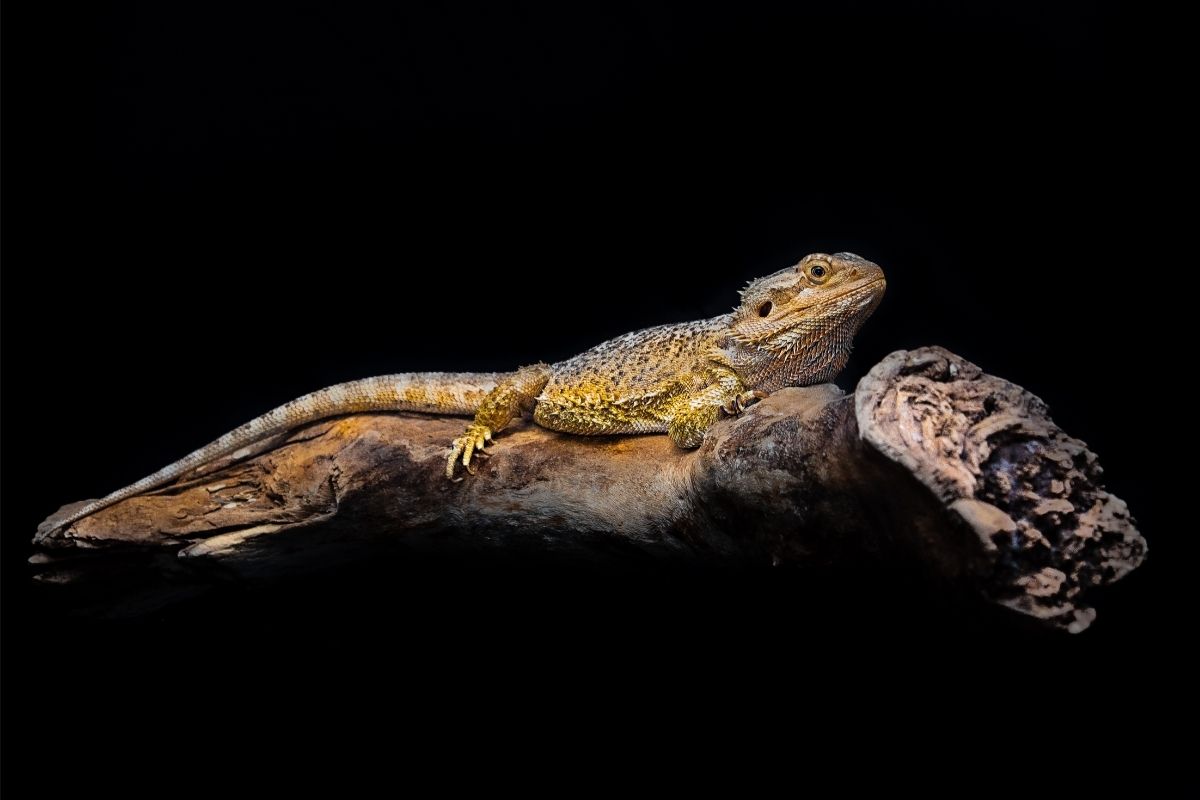Bearded dragons are reptiles native to Australia. They are known for their long, bushy tails and large throats comparable to beards.
The species is considered a popular pet because of its docile nature and ability to live in captivity.

Though bearded dragons are well-liked, they remain less common than other pets, such as cats and dogs.
This may be due to the fact that these animals have a reputation for being difficult to care for.
However, this isn’t always true. In fact, many people who own bearded dragons say that they enjoy caring for them.
If you own a bearded dragon or are thinking of buying one, you may be wondering whether they are sociable creatures. Do they like to be held? Do they enjoy being touched? Discover below.
Do Bearded Dragons Enjoy Being Held?
Bearded dragons have developed a reputation for being quite solitary. In the wild, they normally spend most of their time living alone, away from other creatures.
Despite this, they can sometimes enjoy being picked up.
Often, bearded dragons are not particularly fond of being handled. These lizards prefer to be left alone most of the time.
If you want to interact with your bearded dragon, you should do this from a young age so that it becomes used to human contact.
However, you should bear in mind that some may enjoy being handled. It will really depend on the individual bearded dragon.
It is the same with any animal, such as a cat. Some may even enjoy being carried around.
Meanwhile, others will despise it. You may need to give it a try to determine whether your pet reptile is a fan of being held.
Do Bearded Dragons Enjoy Being Touched?
Many people believe that these reptiles don’t enjoy being touched.
However, this couldn’t be further from the truth. Lots of bearded dragon owners claim that their pets enjoy being stroked.
The truth is that bearded dragons are very tactile animals. They love to feel a soft touch on their skin. As such, they often enjoy being scratched and patted.
You should look out for common signs of hostility when touching your lizard to find out whether they enjoy it.
How To Hold A Bearded Lizard
Holding a bearded lizard correctly is important. You must ensure that you hold it properly because you may harm the lizard if you fail to do so.
It is advised that you thoroughly wash your hands before handling a pet reptile. You may even want to wear gloves while doing so.
Gloves will also provide a layer of protection just in case your bearded dragon is hostile and attacks you.
The reason that we strongly suggest washing your hands is that your hands can carry germs, which could be harmful to your lizard.

Use hot water and hand soap before touching the lizard to stop yourself from giving it an infection.
It is also advised that you remain calm when handling a dragon.
Sudden movements or a sign of fear could alert the dragon, making it aggressive.
When picking up a bearded dragon, you should place your hand gently on its body.
You should then slowly move your hand down until you reach its tail. Once there, you should stroke the lizard’s back.
You should avoid holding the lizard by its tail. Doing so could cause injury to the animal. Instead, you should use your fingers to stroke the lizard’s belly gently.
Then, you should progress to holding it from the belly.
You must use two hands whenever you hold a dragon. This way, you can prevent the lizard from escaping.
You should never attempt to pick up a bearded dragon by using only one hand.
Doing so could result in injury to the lizard. These cold-blooded animals may try to wriggle free, so two hands will keep them in place.
Plus, it significantly reduces the chances of you accidentally dropping the lizard.
Ensure that your dragon has plenty of support when in your hands. The best way to do this is by placing the lizard on a flat surface.
You should make sure that the surface is large enough for the lizard to lie comfortably. Your arms are often a good surface for this.
Because they are quite long creatures, your adorable lizard will likely need the support of your arms.
If your bearded dragon is new, you may want to build up to holding it.
Try smoothing its skin first. If you jump immediately into holding the animal, it may be startled.
Thus, it might develop a violent temperament. This means that it will attack you.
Therefore, you should wait for a few days before attempting to handle it. Instead, try to familiarize yourself with it first.
Lastly, we also recommend washing your hands after touching the bearded dragon. The reason why we advise this is simple: you may have picked up something nasty.
Germs can easily spread through touch alone. After all, your hands are likely to come in contact with many things during the day.
Bearded dragons are especially known to carry the bacteria for salmonella. Salmonella is a type of bacterium that causes food poisoning.
So, if you were to touch your bearded dragon without cleaning your hands, you may end up spreading the sickness around.
Therefore, it is best to give them a quick wash before and after you have handled your dragon. You should also wash any other parts of your body that come into contact with your companion animal.
What Are The Benefits Of Holding A Pet?
Pet owners often feel closer to their animals after holding them. When you hold your pet, you can communicate better with it. You can also get to know more about its personality.
Holding your pet can help you bond with it. This means that you can form a stronger relationship with it.
You can learn how to take good care of it and what makes it happy.
Holding your pet can make you feel happier. Studies show that pet owners tend to experience lower levels of stress when they hold their pets.

The pet may also find this experience to be relaxing, meaning that it can benefit you both.
When you hold your pet, it can benefit you mentally. Research has shown that pet ownership can improve mental health.
For instance, owning a dog can reduce feelings of loneliness. It can also boost your self-esteem.
How Long Should I Hold My Lizard For?
You shouldn’t hold your bearded dragon for too long at any given moment. Generally speaking, you should not hold it for longer than five minutes.
However, if you are comfortable doing so, you can hold it for as long as you like. Just remember to always follow our tips above.
The length of this experience should also be reliant on the dragon’s level of comfort. If it seems uncomfortable, release it as soon as possible.
If the creature is enjoying this activity, keep it in your arms for a while.
However, you should never let your lizard escape from your grasp. Otherwise, it could run away or even bite you.
This would be very dangerous. Even worse, it could injure itself. So, you should never let go of your lizard until you are ready to release it back into its enclosure.
Another reason why you should not hold your dragon for too long is that you need to be careful with its body temperature.
As cold-blooded animals, lizards need to maintain a constant body temperature. If you do not allow them to regulate theirs, they can become ill.
When Should I Not Hold My Bearded Dragon?
There are times when you should not hold your bearded dragon. These include:
- If it is sick or injured
- If your dragon is scared or displaying common signs of fear
- If it feels threatened
- If your dragon is hostile or violent
- If it is sleeping
- If this is the case, you are best off leaving the dragon to its own devices.
Frequently Asked Questions
What Kind Of Cage Should I Buy For My Bearded Dragon?
We suggest buying a reptile cage that is large enough for your bearded dragon. There are different types of cages available depending on your needs.
Whatever type of cage you decide to purchase, make sure that it is suitable for your bearded dragon. For example, it needs to be a suitable temperature for your lizard.
How Can I Tell If My Bearded Dragon Is Afraid?
It can be tough to determine whether your bearded dragon is scared. However, there are some important indicators.
One way to tell if your bearded dragon is afraid is by watching its behavior. If they try to run or move away from you, then your pet is likely afraid of your presence.
Another sign is if they display common signs of fear, such as shaking and trembling.
If you think your bearded dragon is frightened, you should leave it alone for a few days. This will help it get used to you again.
Wait until it seems more comfortable before you attempt to handle your bearded dragon again.
Final Thoughts
We hope that you found these answers helpful. With any luck, you can use this information to grow closer to your pet as a bearded dragon owner.
Remember that there is no right or wrong way to do anything.
All you need to do is to figure out which method works best for you. Your dragon may or may not appreciate being held. There is only one way to find out: by trying. We wish you the best of luck!
